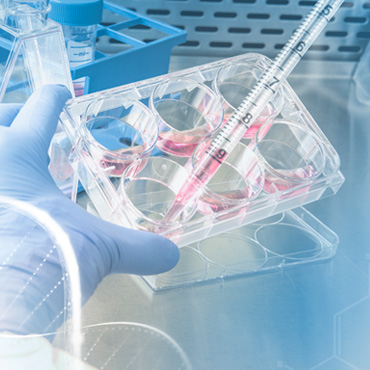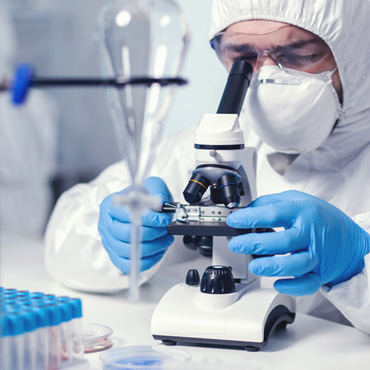Hypertension - High Blood Pressure
The use of Induced Pluripotent Stem Cells (iPSCs) in the treatment of hypertension is an area of active research and holds potential for future therapeutic approaches.
Induced pluripotent stem cell (iPSC) therapy involves the use of adult cells that have been reprogrammed to revert to a pluripotent state, similar to embryonic stem cells. This groundbreaking technology allows for creating of patient-specific stem cells without needing embryonic stem cells or immune-matched donors. iPSCs hold great promise for the future of regenerative medicine, with potential applications in treating numerous diseases, including Parkinson's disease, diabetes, and heart disease.
While specific treatments using iPSCs for diabetes are still in the experimental stage, here are some ways iPSCs could be utilized:
a) Endothelial Cell Repair
Hypertension often leads to damage and dysfunction of endothelial cells, which line the blood vessels. Stem cells can be employed to promote the repair and regeneration of these cells, improving their function and restoring vascular health. Stem cells with the potential to differentiate into endothelial cells can be administered to help repair damaged blood vessels, enhance vasodilation, and improve blood flow..
b) Angiogenesis Stimulation
Hypertension can result in inadequate blood supply to certain tissues or organs. Stem cells, particularly those with angiogenic potential, can be used to stimulate the formation of new blood vessels (angiogenesis) and improve blood circulation to affected areas. This may help reduce ischemic damage and improve tissue health in hypertensive individuals..
c) Modulation of Inflammation
Chronic inflammation is often associated with hypertension and can contribute to vascular dysfunction. Certain stem cell types possess immunomodulatory properties and can help suppress inflammation, reducing its negative impact on blood vessels. By regulating the immune response, stem cells may help alleviate inflammation-related damage and promote vascular health..
d) Vasodilation Promotion:
Stem cells can release various factors that promote vasodilation, relaxing blood vessels and reducing blood pressure. These factors can enhance the production of nitric oxide, a potent vasodilator, and improve endothelial function. By promoting vasodilation, stem cells may contribute to reducing hypertension and improving blood pressure control..
e) Tissue Regeneration:
In cases where hypertension has caused significant tissue damage, stem cells can be utilized to support tissue regeneration and repair. Stem cells have the potential to differentiate into various cell types, including those that comprise the affected tissues or organs. By introducing stem cells to the damaged areas, they may contribute to tissue regeneration and functional recovery.
Efficacy Goals in Treating Hypertension With Stem Cells
The efficacy goals of treating hypertension with stem cells vary depending on the specific approach being targeted. Here are some common efficacy goals in the context of stem cell treatment for hypertension / high blood pressure:
- Blood Pressure Control: The primary goal in treating hypertension is to achieve and maintain optimal blood pressure levels. Stem cell therapy or genetic modifications may aim to improve blood pressure control by addressing the underlying mechanisms contributing to hypertension, such as vascular dysfunction, abnormal vasoconstriction, or sodium-water balance.
- Vascular Health Improvement: Stem cells or genetic modifications could potentially target the improvement of vascular health. This may involve promoting the repair and regeneration of endothelial cells, enhancing vasodilation, reducing inflammation, and supporting overall vascular function. The goal is to restore the health and flexibility of blood vessels, allowing for better blood flow and reduced blood pressure.
- Reduction in Target Organ Damage: Hypertension can lead to target organ damage, including damage to the heart, kidneys, brain, and blood vessels. Treatment with stem cells or genetic modifications may aim to mitigate or prevent further target organ damage by promoting tissue repair, reducing inflammation, and improving organ function. The goal is to protect vital organs and prevent complications associated with hypertension.
- Long-Term Efficacy and Durability: For any treatment approach, long-term efficacy and durability are essential. Stem cell therapy or genetic modifications may aim to provide lasting effects in blood pressure control and vascular health. The goal is to sustain the positive effects over an extended period, reducing the need for ongoing interventions or modifications to treatment.
- Safety and Minimization of Side Effects: Ensuring safety and minimizing potential side effects are critical efficacy goals. Stem cell therapy or genetic modifications should be designed to minimize any adverse effects, including immune responses, off-target effects, or unwanted genetic modifications. The goal is to achieve therapeutic benefits while ensuring patient safety and well-being.
- Individualized Treatment Approach: Hypertension management is often tailored to individual patients' needs, and the same personalized approach would apply to stem cell therapy or genetic modifications. The efficacy goals may include tailoring treatment to the specific patient's characteristics, optimizing outcomes based on their unique genetic profiles, and addressing any underlying conditions or factors contributing to their hypertension.



